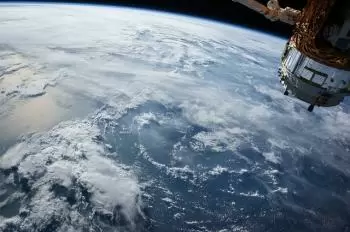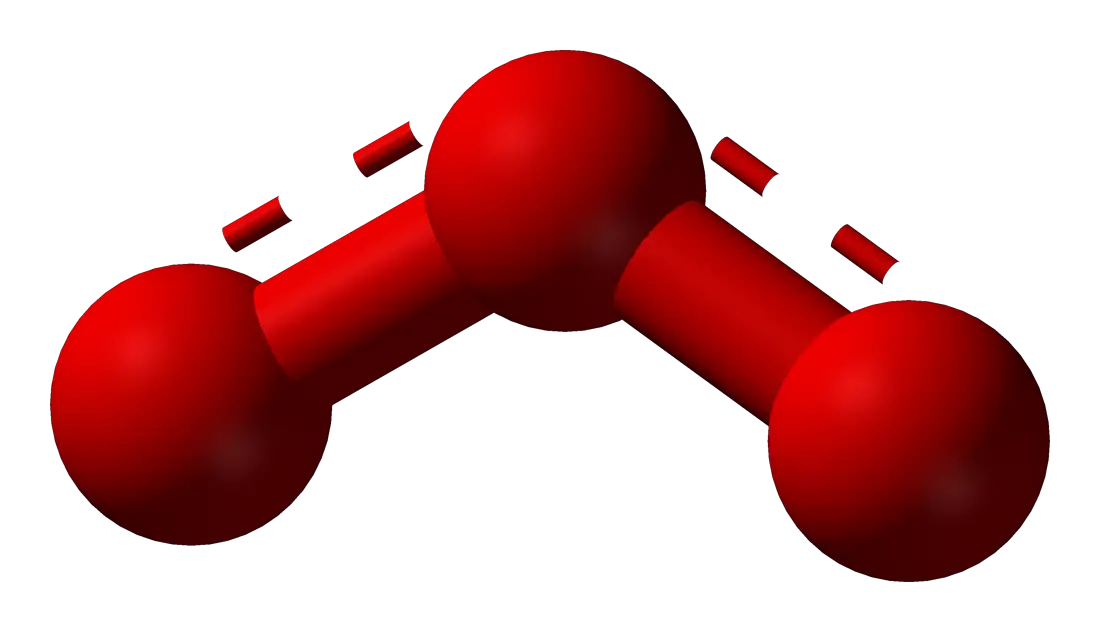
The ozone layer is a layer of the Earth's atmosphere crucial for life on Earth. This layer, located in the stratosphere, plays a vital role in protecting our planet from the sun's harmful ultraviolet rays.
Over the decades, there has been a growing awareness of the importance of this layer and the need to preserve it.
In this article, we will explain what the ozone layer is, how it works, why it is important, and the efforts that have been made to protect it.
What is the ozone layer?
 The ozone layer is a region of the stratosphere that contains a relatively high concentration of ozone (O₃). The stratosphere is a layer of the Earth's atmosphere located at an altitude of approximately 10 to 50 kilometers above the Earth's surface.
The ozone layer is a region of the stratosphere that contains a relatively high concentration of ozone (O₃). The stratosphere is a layer of the Earth's atmosphere located at an altitude of approximately 10 to 50 kilometers above the Earth's surface.
Unlike the troposphere, where most climate and life occur, the stratosphere is drier and more stable. It is in this region where we find the ozone layer.
Ozone is a molecule composed of three oxygen atoms (O₃), unlike diatomic oxygen (O₂) which is more common in the atmosphere. The ozone layer contains a higher concentration of ozone compared to other parts of the atmosphere, and this concentration is essential for its protective function.
How does the ozone layer work?
The ozone layer plays a crucial role in protecting Earth from the sun's harmful ultraviolet (UV) rays.
UV rays are a form of electromagnetic radiation that comes from the sun and is divided into three main types: UVA, UVB and UVC. UVC rays are the most dangerous, but fortunately, most of them are absorbed by the atmosphere before reaching the Earth's surface. UVA and UVB rays are the ones that affect us the most.
The ozone layer absorbs most UVB rays and a significant portion of UVA rays. This prevents these rays from reaching the Earth's surface in harmful quantities. The absorption action is due to the chemical composition of ozone, which acts as a protective barrier against UV radiation.
The importance of the ozone layer
The importance of the ozone layer cannot be underestimated as without it, life on Earth would be in serious danger due to excessive exposure to UV rays.
The harmful effects of UV radiation include increased risk of skin cancer, cataracts, eye damage, suppression of the immune system, and damage to marine and terrestrial ecosystems.
In addition to protecting humans and other living things from the harmful effects of UV radiation, the ozone layer also plays an important role in regulating the climate and the environment.
Variations in ozone concentration in the stratosphere can affect the circulation pattern of the atmosphere and therefore influence global climate.
The ozone hole
Over the past few decades, an alarming phenomenon known as the "ozone hole" has been observed in the Antarctic region. This hole refers to a significant decrease in the concentration of ozone in the stratosphere during the southern spring.
Ozone depletion in this region has been attributed to the release of chemical compounds, especially chlorofluorocarbons (CFCs), used in refrigerants and aerosols.
CFCs and other chemical compounds released into the atmosphere rise to the stratosphere, where they are broken down by UV radiation. In this process, they release chlorine atoms that destroy ozone molecules.
The ozone hole in the Antarctic region is formed due to the specific conditions of the stratosphere in that area and the flow of air in the region. Over the past few years, there has been a decrease in the size of the ozone hole due to international efforts to eliminate ozone-destroying chemicals.
Montreal Protocol: preserving the ozone layer
Preserving the ozone layer has become a global priority.
The Montreal Protocol, signed in 1987, is an international agreement that was created with the purpose of phasing out the production and consumption of substances that deplete the ozone layer, such as CFCs. This agreement has had a significant impact on reducing the release of harmful substances into the atmosphere and, as a result, on the recovery of the ozone layer.
The Montreal Protocol has been a success in protecting the ozone layer, and has become an example of how international cooperation can address global environmental problems.
In addition, the protocol has had additional positive effects, since many of the substances controlled under the agreement are also greenhouse gases, so their elimination has contributed to the mitigation of climate change.
Effects on solar energy collection
The ozone layer plays a crucial role in absorbing the sun's harmful ultraviolet (UV) rays, but it also influences the amount of solar radiation that reaches the Earth's surface.
When the ozone layer weakens, it allows more UV radiation to reach the surface, which can damage solar energy systems and reduce the efficiency of solar cells. Excessive UV radiation can accelerate the degradation of the materials used in solar panels and cause a decrease in energy production over time. Additionally, UV radiation can damage the electronic and optical components of solar energy systems.
Protection of the ozone layer is therefore essential to ensure the durability and efficiency of solar energy and its contribution to the supply of clean and sustainable energy.
Relationship with climate change
The relationship between the ozone layer and climate change lies in their indirect interaction and in the reduction of the ozone layer due to the release of harmful chemical compounds, such as chlorofluorocarbons (CFCs). While the ozone layer is located in the stratosphere and climate change primarily refers to processes in the troposphere, there are several links:
- Greenhouse gases : Some of the chemicals that deplete the ozone layer are also powerful greenhouse gases, meaning they contribute to global warming.
- Changes in atmospheric circulation : Alterations in the ozone layer can affect the circulation of the stratosphere, which, in turn, can influence weather patterns in the troposphere, including changes in the distribution of temperatures and winds in the Earth's atmosphere. .
- Impact on UV radiation : Depletion of the ozone layer can expose the Earth's surface to higher levels of ultraviolet radiation, which could affect plant photosynthesis, the health of living things and, ultimately, the ecosystems, with implications for carbon uptake and climate regulation.